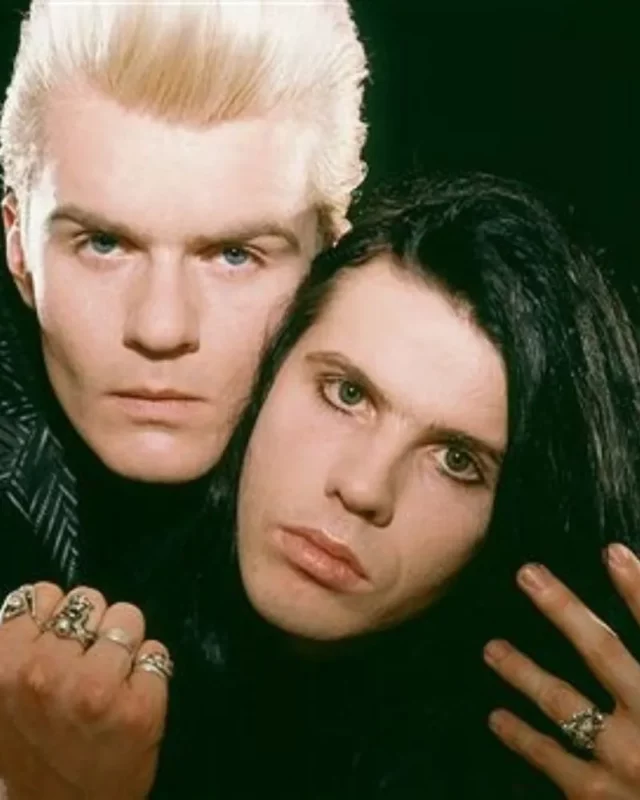Ian Astbury, a renowned musician and vocalist, has left an indelible mark on the music industry. From his humble beginnings to his rise to fame as the frontman of The Cult, Astbury’s career has been characterized by his unique style and powerful stage presence.
Despite personal struggles and the band’s hiatus, Astbury has continued to create music through solo projects and collaborations. His influence and impact on the industry remain undeniable, solidifying his place as a legendary figure in rock music.
Early Life and Upbringing
Ian Astbury, the lead vocalist of the rock band The Cult, was born on May 14, 1962, in Heswall, England, and grew up in a working-class family. Astbury’s early life was marked by the struggles and challenges faced by his family in their modest circumstances. Despite the limitations, Astbury’s parents instilled in him a strong work ethic and a love for music.
As a young boy, Astbury found solace in music and developed a deep passion for rock and roll. He immersed himself in the music scene, attending concerts and listening to records, which ultimately shaped his future as a musician. Astbury’s humble beginnings and exposure to music at an early age laid the foundation for his successful career in the music industry.

image source: facebook
Musical Influences and Early Career
Having grown up with a deep passion for music, Ian Astbury’s early career was shaped by his exposure to various musical influences.
Astbury’s musical journey began in his teenage years when he discovered the raw energy and rebellious spirit of punk rock. Inspired by the likes of The Clash and Sex Pistols, he formed his first band, Southern Death Cult, in 1981.
However, it was his encounter with the music and ethos of Native American culture that had a profound impact on his artistic direction. Astbury’s fascination with Native American spirituality and their connection to nature inspired him to form the iconic rock band, The Cult, blending elements of punk, hard rock, and psychedelic music.
Astbury’s unique blend of influences and his powerful vocal style set him apart as a frontman, propelling him to fame and establishing him as one of the most influential figures in rock music.
Ian Astbury Body Measurements And Personal Details:-
Name:Ian Robert Astbury
Nickname:The Shaman
Profession:Singer, songwriter
Date of Birth:May 14, 1962
Age:59
Net Worth:$15 million
Height:6ft 1in (185 cm)
Weight:83 kg (183 lbs)
Body Measurement:Unknown
Eye Color:Blue
Hair Color:Brown
Birthplace/Hometown:Heswall, Merseyside, England
Nationality:British
Gender:Male
Ethnicity:White
Religion:Unknown
Sexuality:Straight
Sun Sign (Zodiac Birth Sign):Taurus
Parents:Na

image source: facebook
Formation of the Cult and Rise to Fame
Astbury’s passion for music and his unique blend of influences led him to form the iconic rock band, The Cult, which would catapult him to fame and establish him as one of the most influential figures in rock music.
The Cult was formed in 1983 in Bradford, England, with Astbury serving as the lead vocalist and songwriter. The band’s sound combined elements of post-punk, gothic rock, and hard rock, creating a distinctive and powerful musical style.
Their debut album, ‘Dreamtime,’ released in 1984, garnered critical acclaim and commercial success, paving the way for their rise to fame. The Cult’s subsequent albums, such as ‘Love’ (1985) and ‘Sonic Temple’ (1989), further solidified their status as rock icons, with hits like ‘She Sells Sanctuary’ and ‘Fire Woman’ becoming anthems for a generation.
Astbury’s mesmerizing stage presence and soulful vocals, combined with the band’s energetic performances, captivated audiences worldwide and cemented their place in rock music history.
Personal Struggles and the Band’s Hiatus
During this period, the band faced a series of personal struggles and eventually went on a hiatus. Despite the success they had achieved, both Ian Astbury and guitarist Billy Duffy were battling with substance abuse issues, which started to take a toll on their personal lives and their ability to function as a band.
The constant touring and pressure of being in the spotlight added to the already existing challenges they were facing. As a result, the band members decided to take a break from their music career and focus on addressing their personal issues.
The Cult officially went on hiatus in 1995, and this period of separation allowed Astbury and Duffy to seek the help they needed and work on their personal growth.

image source: facebook
Astbury’s Solo Projects and Collaborations
After the hiatus of The Cult, Ian Astbury embarked on various solo projects and collaborations, expanding his musical repertoire and exploring new creative avenues.
In 1995, he released his first solo album, ‘Spirit\Light\Speed,’ showcasing a more introspective and experimental side of his artistry.
Astbury also collaborated with other notable musicians, including guitarist Slash and the band UNKLE.
In 2000, he joined forces with Doors members Ray Manzarek and Robby Krieger to form The Doors of the 21st Century. The band toured extensively, performing classic Doors songs with Astbury on vocals.
Astbury’s collaborations continued throughout the years, with projects such as Holy Barbarians, a band formed with The Cult’s drummer, Scott Garrett, and various guest appearances on albums by artists like The Black Ryder and Asian Dub Foundation.
These solo projects and collaborations have allowed Astbury to explore different musical styles and showcase his versatility as a vocalist and songwriter.
Legacy and Ongoing Impact in the Music Industry
Throughout his illustrious career, Ian Astbury has left an indelible mark on the music industry, shaping the landscape with his distinctive voice and influential songwriting.
As the lead vocalist for The Cult, Astbury’s powerful and emotive singing style has made him one of the most recognizable voices in rock music. His ability to seamlessly blend elements of punk, gothic, and alternative rock has not only earned The Cult a dedicated following but has also influenced countless artists across different genres.
Astbury’s impact extends beyond his work with The Cult, as he has collaborated with artists such as Slash, Billy Duffy, and Jimmy Page, further showcasing his versatility and musical prowess.
Today, his legacy continues to resonate, with his songs being celebrated as classics, and his influence felt in the work of current and upcoming musicians.

image source: facebook
Frequently Asked Questions
How Did Ian Astbury’s Upbringing and Early Life Experiences Shape His Musical Career?
Ian Astbury’s upbringing and early life experiences had a significant impact on his musical career. These formative years shaped his perspective, influenced his artistic expression, and provided the foundation for his unique sound and style.
What Specific Musical Influences Had the Biggest Impact on Ian Astbury’s Early Career?
The specific musical influences that had the biggest impact on Ian Astbury’s early career were diverse and ranged from classic rock icons like Jim Morrison and David Bowie to punk rock bands like The Clash and The Sex Pistols.
Can You Provide More Details About the Formation of the Cult and Their Journey to Fame?
The formation of The Cult and their journey to fame is a significant aspect in understanding Ian Astbury’s career. It is a story of perseverance, creative evolution, and the ability to connect with audiences on a profound level.
What Were Some of the Personal Struggles That Ian Astbury Faced During His Time in the Cult, and How Did It Affect the Band?
During his time in the band, Ian Astbury faced personal struggles that had an impact on the group. These challenges affected the dynamics within the band and influenced their music and overall success.
What Are Some of Ian Astbury’s Notable Solo Projects and Collaborations Outside of His Work With the Cult?
Ian Astbury has ventured into various solo projects and collaborations outside of his work with The Cult. Notable collaborations include working with artists like Slash, Billy Duffy, and Mick Jones, while his solo projects feature albums like “Spirit\Light\Speed” and “Ian Astbury: Live at the Grand Olympic Auditorium.”
Conclusion
In conclusion, Ian Astbury’s journey from his early life and upbringing to his rise to fame with the Cult showcases his musical talent and perseverance.
Despite personal struggles and the band’s hiatus, Astbury continued to pursue his passion through solo projects and collaborations.
His legacy in the music industry is marked by his significant impact and ongoing influence.
